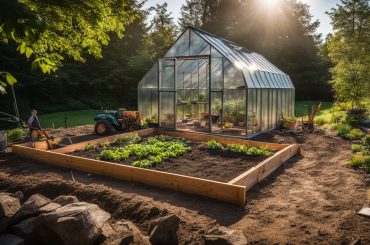Table of Contents
Favoured for their tart flavour and wide range of culinary applications, gooseberries flourish in the temperate British climate. Whether harvesting gooseberries from your own yard or travelling to a nearby farm, knowing when they’re at their peak ripeness is essential. In this post, we’ll look at when to pick Gooseberries in the UK and give you all the details you need to get started.
Gooseberries are loved by fruit lovers around because of their versatility in the kitchen. However, a gardener must pick them at the optimal moment to fully appreciate their flavour and sweetness. This article will help you determine when your gooseberries are ready to be picked, whether you are a seasoned gardener or a rookie fruit picker.
Let’s dive in and find out when to pick gooseberries!
Step 1: Taking Note of The Gooseberry’s Hue and Feel
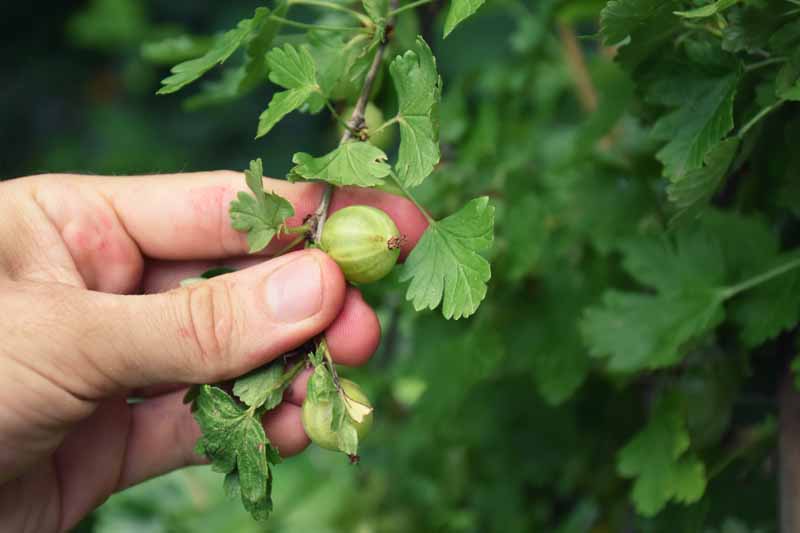
The ripeness of gooseberries can be judged largely by their appearance and feel. The fruit goes through a series of transformations as it ripens, which serve as signs that it’s ready to be harvested. Use these criteria to determine if your gooseberries are ready to be picked:
Colour
Gooseberries, like many other fruits, change colour as they ripen. Culinary gooseberries used in the kitchen should be selected when they have developed a bright green or yellowish-green hue. Don’t pluck them while they’re still wholly green; that’s when they’re at their sourest. Green maturity might mean different things for different varieties of berries, but as a general guideline, you want to wait until they have reached their full colour. Dessert gooseberries, conversely, are softer and sweeter than the regular kind and are best chosen after their colour has fully developed (this could be red, purple, or pink, depending on the type). These hues denote that the berries are at their peak of ripeness and flavour.
Texture
Gooseberries’ texture, in addition to colour, can be used as a reliable indicator of ripeness. Gooseberries used in cooking should be firm and slightly resistive when squeezed. This firmness indicates full maturation and readiness for use in culinary applications. On the other hand, dessert gooseberries should yield only a little when gently pressed. The berries are tender when fully ripe and at their peak sweetness. When handling berries, apply gentle pressure to avoid damaging the delicate fruit.
Step 2: Taking Into Account the Timing
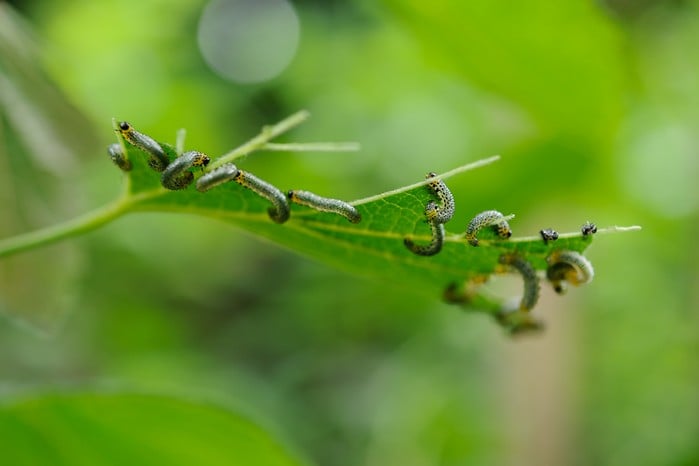
When collecting gooseberries, time is everything to get the fruit at its peak freshness and flavour potential. When gooseberries are at their ripest for picking in the UK can be affected by several factors, including geography, climate, and the particular variety of gooseberry you harvest. You may maximise the pleasure you get from the fruits by ensuring that you collect them when they are at their ripest state by considering the timing.
In the United Kingdom, gooseberries only mature during certain times of the year. Late June and early July are optimum picking times for culinary gooseberries, while mid-July and early August are optimal for dessert gooseberries. It’s worth noting that these estimates can shift slightly based on the weather and other factors in the area where the plant is being grown.
You can pick the best gooseberries at their peak flavour and texture, which their colour may determine. Gooseberries used in cooking are ready to be picked when they turn bright or yellowish green. Don’t pluck them while they’re still wholly green; that’s when they’re at their sourest. In contrast, dessert gooseberries of any species must be a deep, saturated red, purple, or pink hue. The fruit should yield slightly when gently pushed and have a delicate, pleasant texture.
How the gooseberry bush’s fruit clusters mature can also deduce the ripening process. Berries tend to increase in size and cluster density as they ripen.
Step 3: Equipment that One Must Use when Picking Gooseberries
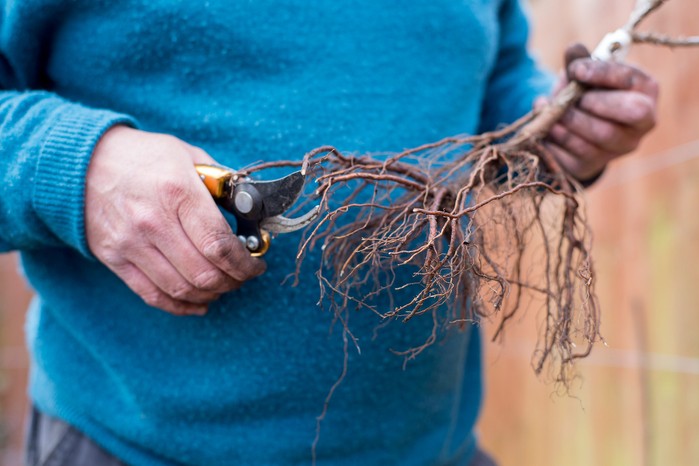
Having the proper equipment on hand can make picking gooseberries a much more pleasant and productive experience. For a fruitful harvest of gooseberries, you’ll need the following:
Gardening Gloves
Gooseberry plants are covered in sharp little thorns that can cause severe scratches if you’re not careful. Wear durable gardening gloves to prevent injury to your hands. Try to get gloves that will protect your hands without limiting your dexterity, as this will be necessary for handling the fruit.
Pruning Shears or Scissors
A sharp set of pruning shears or scissors is essential for picking gooseberries. These implements are used to cleanly and precisely cut gooseberry stems close to the base of the fruit. If you want a clean cut without crushing the stem, invest in a pair of bypass pruners, which feature a curved cutting blade that slides over and under the bottom blade.
Container Or Basket
Gathering the berries requires a basket or other suitable container. Pick a basket or container that’s not too heavy, can hold up to the number of gooseberries you anticipate, and is spacious enough. Spreading the berries out in a small basket or tray prevents them from being crushed. Make sure there’s a carry handle on the container, too.
Garments for Safety
Even though it’s not technically a tool, wearing protective clothing when picking is crucial to avoid getting scratched or bitten. Wearing protective clothing, such as long sleeves and pants, is a good idea. You must take this precaution if your gooseberry bushes are thorny or overgrown.
Sunscreen and Sun Hat
Taking precautions against the sun is vital if you intend to spend an extended period gathering gooseberries. Cover exposed skin with sunscreen and wear a sun hat with a wide brim to protect your face and neck to avoid getting sunburnt.
Durable Footwear
Choose a pair of sturdy, closed-toe shoes that also feel excellent on your feet. Picking gooseberries may require negotiating rugged terrain or avoiding branches and thorny shrubs. Wearing sturdy shoes in the yard will keep your feet safe and help you maintain your balance.
Gathering gooseberries can go more quickly and easily with these crucial tools. You won’t have to worry as much about getting hurt and can focus on having fun. Always clean and preserve your tools so they are in top shape for the next gooseberry season.
Step 4: Harvesting Techniques
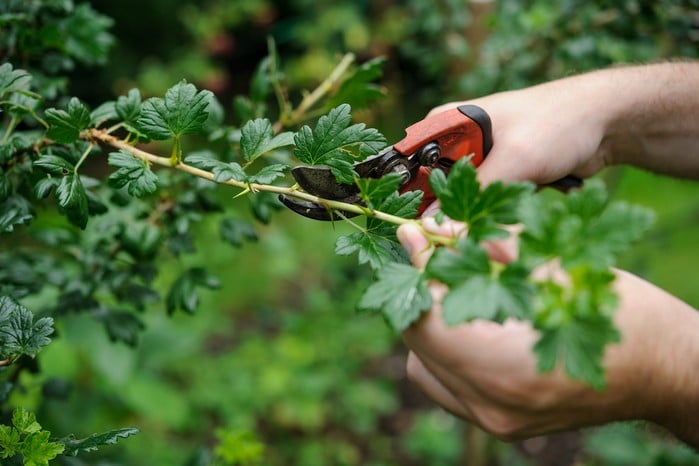
Carry out the following procedures to select gooseberries successfully:
- Locate the ripe gooseberries when standing next to the shrub they are growing on.
- To prevent the gooseberry from toppling over, support its stem by gently pinching it between your fingers.
- Cut the stem close to the base of the fruit using pruning shears or scissors, taking care not to damage any adjoining berries or foliage.
- Carefully place the collected berries in the basket or container, ensuring enough space between each berry.
- Methodically proceed through the plant, collecting just the ripe berries and leaving the immature ones where they are so they have more time to ripen.
- While picking the gooseberries, make sure to sift through each berry. Throw away any berries that are spoiled, mouldy, or damaged in any way. If you have more than one type of berry, split the gathered berries into individual containers after sorting.
- Gooseberries are delicate fruits; thus, it is essential to handle them with care to prevent damaging them in any way, such as by crushing or bruising them. Put them in your container carefully, ensure not to stack them too high, and then close it up.
- After harvesting the gooseberries, rinse them before consuming them or putting them away for later use. Put the berries in a colander, and then rinse them thoroughly under clean, cold water to remove any dirt or other particles.
Different Varieties of Gooseberries
Diverse types of gooseberries have diverse flavours, textures, and applications. Knowing when to pick gooseberries in the UK requires understanding the subtle differences between culinary (cooking) and dessert gooseberries.
1. Culinary Gooseberries
Because of their sour taste, people most often use culinary gooseberries in the kitchen. The average diameter of these gooseberries is between 1 and 2 centimetres. When ripe, their flesh is solid, and they glow a bright green or yellowish green. Since their sourness decreases after cooking, culinary gooseberries are typically picked a little before their sweeter counterparts.
Pies, jams, jellies, chutneys, and sauces benefit significantly from the tartness of culinary gooseberries. Due to their high pectin content, They do not require additional thickeners for setting jams and jellies. Culinary gooseberries are useful in sweet and savoury recipes due to their acidic flavour, which complements various foods.
2. Dessert Gooseberries
Dessert gooseberries are sweeter and softer than regular gooseberries; they are typically eaten fresh. These gooseberries have a 0.5 to 1-centimetre diameter, making them somewhat more manageable. They come in various colours, from red to purple to pink, and people love them for their juicy, plump texture.
Dessert gooseberries are delicious when fully ripe and can be eaten on their own or used in fruit salads. As a garnish or in a dessert presentation, their eye-catching hues are a bonus. You can use dessert gooseberries in various culinary applications, but they shine when their inherent sweetness is showcased.
How to Preserve and Enjoy Gooseberries?
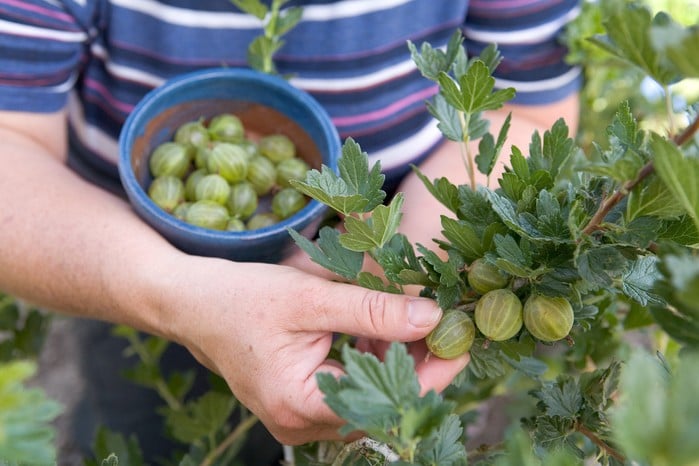
If you want to get the most out of your newly harvested gooseberries, you should follow these guidelines for storing and eating them:
1. Immediate Use
If you intend to utilise the gooseberries as soon as possible, the best way to store them is in a cool location shielded from the sun. They will taste best and be at their freshest if consumed within a few days of purchase.
2. Refrigeration
Gooseberries last longer in the fridge than at room temperature. Put them in a perforated plastic bag or a shallow container lined with paper towels and put them in the crisper drawer of your fridge. Gooseberries have a two-week shelf life if stored correctly.
3. Freezing
It is possible to ice gooseberries for extended preservation. Clean and desiccate the berries completely, then distribute them evenly on a baking tray and put them in the freezer until they become frozen. Transfer the frozen berries to sealed receptacles or freezer sacks, eliminating as much air as feasible, and keep them in the freezer for as long as 12 months.
4. Applications in Cooking
Gooseberries are extremely adaptable fruits that you may use in various ways across the culinary spectrum. They are fantastic for preparing jams, jellies, pies, tarts, dessert sauces, and other sweets. To properly appreciate the one-of-a-kind gooseberry flavour, you need to try a few different dishes.
Final Thoughts
Knowing when to pick gooseberries in the UK at the ideal time is a satisfying experience that pays off when you eat the fruit of your labour. You may guarantee a tasty and pleasant harvest by learning the signs of ripeness, such as colour and texture, and the best times to pick certain species. Be sure you have gloves, pruning shears, and an excellent container to store your harvest in so you can work quickly and comfortably.
After you’ve collected your ripe gooseberries, it’s important to scrutinise them and weed out any that aren’t ready to eat. The key to maintaining their flavour and freshness is correct preservation. The berries can be kept fresh for longer if you rinse them and store them in the fridge or freezer, whether you want to consume them immediately.
Gooseberries can be used in various dishes, from classics like jams and pies to more daring creations like sauces and sweets. Their sour and sweet flavour goes well with many different types of food. So, let your culinary imagination go wild and dive into the delicious realm of gooseberry dishes.
The excitement of collecting fresh, vivid gooseberries, whether from your own garden or a trip to a nearby farm, is hard to overstate. Don’t let this opportunity pass you by; use the information here to prepare fresh, tasty gooseberries for your next adventure.

![Harvesting Gooseberries: How and When To Pick Gooseberries [UK] When Are Gooseberries Ready To Pick](https://www.thearches.co.uk/wp-content/uploads/When-Are-Gooseberries-Ready-To-Pick.jpg)



